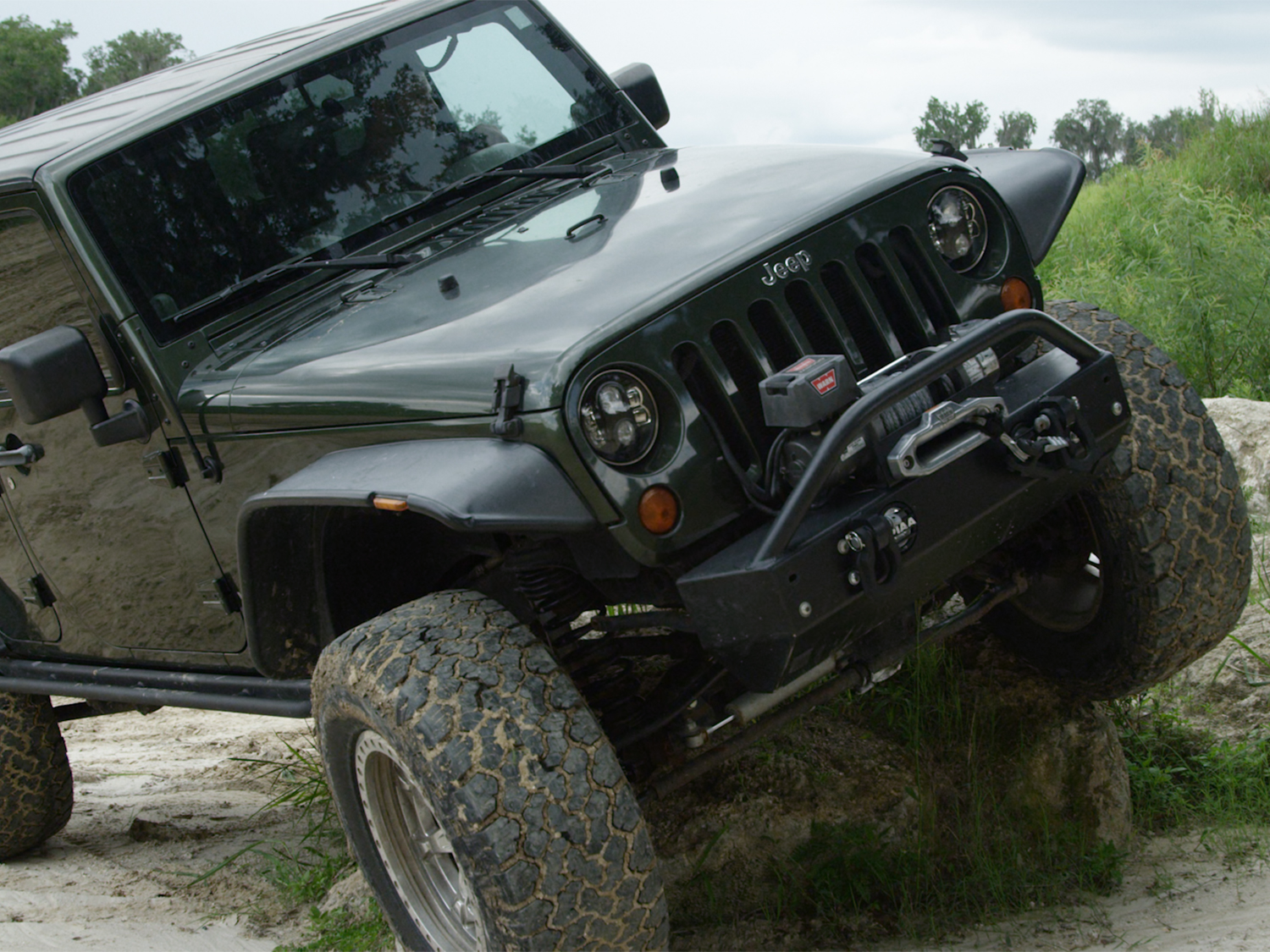We may earn revenue from the products available on this page and participate in affiliate programs. Learn More ›
Sand
Coastal fishermen in search of striped bass, false albacore, or seatrout will very likely end up driving on the beach. The best way to drive on sand is to ride above it. You do this by “airing down,” which means letting air out of each tire. How much? A lot, in many cases you want no more than 10-15 psi per tire. Doing this flattens the tire, giving it a larger footprint, which in turn, improves overall traction.
In most cases, you won’t need to put the transmission in low-range four-wheel drive. That may simply deliver too much power to the wheels, causing them to spin. When that happens, you not only lose traction, but the truck can sink deeper into the sand where you risk getting stuck. Instead, shift into high-range 4WD. Apply the throttle slowly and smoothly (again so as not to spin the wheels) and try to drive in a straight line as much as possible. Use the brake sparingly.
Above all, you want momentum, not speed. Slow and steady gets you to the fish…and back. And don’t forget to air up the tires when you’re ready to head home.
A good choice of tire here is General Tire’s Grabber APT. It’s a strong and durable all-purpose-terrain tire that provides competent all-terrain off-road capability, but it also delivers excellent on-road performance in all weather conditions.
Mud
Duck hunters often have to drive along muddy trails to reach their blinds. Goose hunters, too, have to deal with mud when they drive to the edges of harvested fields to set up their layout blinds and decoys. Know this: mud doesn’t have to be deep to create deep trouble for the offroad sportsman. Gumbo mud, which is clay based, will quickly clog the tread of even the best offroad tire, stopping you in your tracks. The best play here to park before you hit the mud and walk in. After the first freeze, though, most likely you’ll be able to drive freely over the gumbo.
Before driving through a mudhole you’ve never seen before, get out and to see how deep it is. A hole that is deep enough to bury the axles can be big trouble. In that case, it’s better to go around it. If you’re faced with driving a deeply rutted trail, the best option is to ride the ridges, which keeps the tire out of the deepest part of the rut. You can also slightly turn the steering wheel left and right while negotiating a deep rut. This lets the sipes of the tires grab ahold, helping improve overall traction.
Most mud can be handled with high-range four-wheel drive. The idea is to keep the truck moving steadily forward without creating wheel spin than can sink you. If you encounter really bad mud on a trail, the best approach just might be to park the truck and walk the rest of the way.
A good tire choice here would be General Tire’s Grabber X3. This tire has an aggressive open pattern with massive tread blocks capable of delivering extreme off-road traction. It also sports self-cleaning evacuation channels, which quickly and efficiently spit out mud while you drive. The sidewall protection lugs also provide more grip when driving through mud.
Rock
Deer hunters heading to remote deer camps may often find themselves trying to drive over rocky sections of a trail. These obstacles can be negotiated successfully as long as the driver follows a few commonsense suggestions.
First and foremost, if you know the trail will have a lot of rocks, make sure your vehicle is equipped with skid plates to protect vital components such as the differential and oil pan. The paramount rule is to go slow. Doing so helps keeps the wheels planted firmly on the ground for maximum control. Small rocks can be straddled, but if you worry about ground clearance, get out of the vehicle and take a close look before moving forward. As you move forward in a boulder field, feather both the throttle and brake, easing the vehicle slowly over each obstacle. Larger rocks can be driven over. Here, let the vehicle’s tires and suspension do the work. In this case, low-range four-wheel drive works best, as it lets the vehicle move slowly over the rock without throttle input from you. In some cases, it’s best to let a partner get out and spot for you so you can position the front wheel correctly over the rock.
A good choice of tire here would be General Tire’s Grabber A/T, a next-generation, aggressive all-terrain tire that provides exceptional off-road capability and durability. This tire also features StabiliTread Technology that gives the tire a larger footprint and optimized pattern stiffness that helps you deal successfully with rocky terrain.
